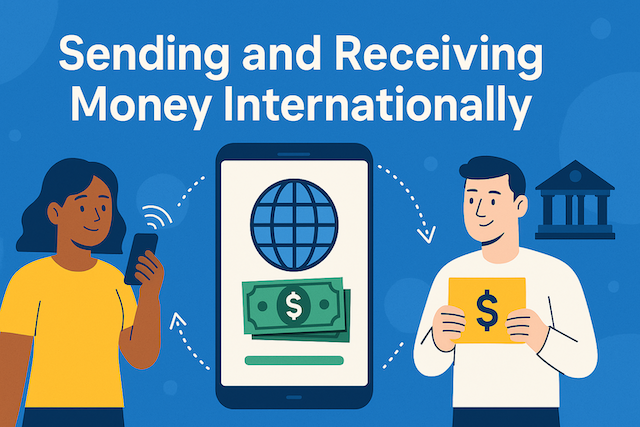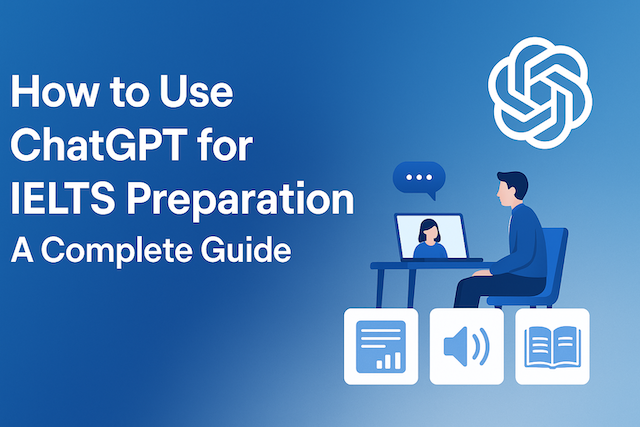Sending and Receiving Money Internationally

Contents
- Sending and Receiving Money Internationally
- Why People Send and Receive Money Across Borders
- Key Methods of Sending Money Internationally
- Receiving Money from Abroad: What You Need to Know
- How to Compare Transfer Options
- How to Avoid Common Pitfalls
- International Transfers for Freelancers and Remote Workers
- International Transfers for Businesses
- Regulatory Compliance & Tax Implications
- Real-Life Scenarios
- Final Tips
- Conclusion
- Frequently Asked Questions
- What is the safest way to send money internationally?
- Which service offers the lowest fees for international transfers?
- Can I receive international payments using GCash or Maya?
- How long does it take to send money internationally?
- Are international money transfers taxed?
- What information do I need to send money abroad?
- Is it safe to use cryptocurrency for international transfers?
- What should I do if my money doesn’t arrive?
- Can I send money to someone without a bank account?
- Are there limits on how much I can send or receive internationally?
- Can I use credit cards to send international money transfers?
- What’s the best way for freelancers to receive international payments?
- Can I track the status of my transfer?
- Do I need to verify my identity for international transfers?
Sending and Receiving Money Internationally
Your Complete Guide to Safe, Fast, and Affordable Global Transfers
In today’s globalized world, the ability to send and receive money across borders is no longer a luxury — it’s a necessity. Whether you’re an expat supporting family back home, a freelancer working with international clients, a digital nomad managing payments, or a student receiving funds from parents abroad, international money transfers are part of everyday life.
But navigating the global financial system can be tricky. With so many providers, currencies, fees, and regulations involved, how can you be sure you’re using the safest and most cost-effective method?
This article will walk you through everything you need to know about international money transfers: key platforms, how they work, fees to expect, how to compare providers, and tips to make your transactions smooth, secure, and smart.
Why People Send and Receive Money Across Borders
International money transfers serve a variety of purposes:
-
Remittances: Migrant workers sending money to support families in their home country.
-
Business Payments: Freelancers and entrepreneurs getting paid from overseas clients.
-
Education: Parents funding tuition or living expenses for children studying abroad.
-
E-commerce: Online sellers or buyers exchanging cross-border payments.
-
Personal Support: Emergency help, gifts, or shared travel expenses.
Understanding your reason helps determine the best platform and strategy.
Key Methods of Sending Money Internationally
1. Bank Transfers (SWIFT)
Traditional bank-to-bank wire transfers are the most common method. These use the SWIFT network, a global system that facilitates cross-border payments between banks.
Pros:
-
Reliable and traceable
-
Ideal for large transactions
-
Good for business payments
Cons:
-
High fees ($25–$50 per transfer)
-
Unfavorable exchange rates
-
Takes 2–5 business days
Best For:
-
Businesses or high-value transfers
-
Sending to bank accounts in countries with limited fintech coverage
2. Online Money Transfer Services
These services are faster, cheaper alternatives to traditional banks. Popular platforms include:
Wise (formerly TransferWise)
-
Real exchange rate (“mid-market rate”)
-
Transparent, low fees
-
Supports bank accounts in 80+ countries
Remitly
-
Targeted toward remittances
-
Offers economy and express speeds
-
Competitive rates to countries like the Philippines, India, Mexico
WorldRemit
-
App-based transfers
-
Supports mobile wallets, cash pickup, bank deposits
-
Available in over 130 countries
Xoom (by PayPal)
-
Fast transfers
-
Cash pickup or direct deposit
-
Higher fees but broad reach
Revolut
-
Multi-currency wallet
-
Send and receive in 30+ currencies
-
Great for travelers or digital nomads
3. Mobile Wallets & Apps
In some regions, mobile wallets like GCash, Maya, M-Pesa, or Paytm can receive international transfers directly.
Examples:
-
Send money from PayPal US to GCash in the Philippines.
-
WorldRemit can deposit directly into mobile wallets in Africa or Southeast Asia.
This method is ideal for:
-
Instant access to funds
-
Unbanked recipients
-
Remote areas without banking infrastructure
4. Cryptocurrency
Some freelancers and international workers are now using crypto for cross-border payments.
Pros:
-
Fast and decentralized
-
Low transaction costs
-
Not limited by borders
Cons:
-
Volatility
-
Requires tech knowledge
-
Legal/regulatory risks in some countries
Crypto services like USDT (Tether) and Bitcoin Lightning Network are gaining popularity among global freelancers for quick settlements.
5. Cash Pickup Services
Services like Western Union, MoneyGram, and RIA allow users to send cash that can be picked up at thousands of global agents.
Pros:
-
No bank account required
-
Widely available, even in rural areas
Cons:
-
High fees (up to 10%)
-
Security risk of carrying cash
Best for emergencies or regions without banking infrastructure.
Receiving Money from Abroad: What You Need to Know
Receiving money internationally involves choosing the right method depending on your location, access to banking, and urgency.
Common Receiving Methods:
-
Bank account deposit
-
Mobile wallet credit (e.g., GCash, Maya, Alipay)
-
Cash pickup at a local agent
-
ATM withdrawal via global cards
-
Prepaid cards linked to a remittance service
What You’ll Need to Receive Funds:
-
A valid ID (passport, driver’s license)
-
Transaction reference number
-
Receiving method (bank details, wallet, pickup center)
How to Compare Transfer Options
Here’s how to evaluate different transfer providers:
| Factor | Why It Matters |
|---|---|
| Exchange rate | Many providers use marked-up rates. Always check mid-market rate. |
| Fees | Includes sending fees, receiving fees, and hidden charges. |
| Transfer speed | Varies from seconds to 5 days depending on method. |
| Transfer limits | Some services cap transactions (e.g., $2,999). |
| Payment methods | Credit card, debit card, bank account, wallet, crypto. |
| Receiving options | Bank, wallet, cash, prepaid card. |
| Customer support | For disputes, errors, or refunds. |
Tools like Monito.com and Finder.com help compare real-time transfer options based on destination, amount, and speed.
How to Avoid Common Pitfalls
Sending money across borders isn’t risk-free. Avoid these common mistakes:
1. Ignoring Fees and Exchange Rates
A $0 fee doesn’t mean no cost — you may lose in the exchange rate margin. Always compare total cost, not just fee labels.
2. Using Credit Cards for Transfers
Convenient but expensive. Many services charge extra fees and interest for credit card payments.
3. Falling for Scams
Only use trusted platforms. Be wary of:
-
Fake emails or links
-
Requests from “strangers”
-
Crypto Ponzi schemes
4. Not Verifying Recipient Info
One wrong digit in a bank account number can result in delays or lost funds. Always double-check.
International Transfers for Freelancers and Remote Workers
Freelancers working on platforms like Upwork, Fiverr, Toptal, or 99designs often need to receive payments in their local currency.
Best Tools:
-
Payoneer – Create virtual USD/EUR/GBP accounts and withdraw locally
-
Wise – Receive in multiple currencies and convert at fair rates
-
Revolut – Store funds in different currencies and use globally
-
Skrill – Accept payments from clients in EU and Asia
International Transfers for Businesses
Small businesses with global clients or remote employees need reliable and scalable payment systems.
Solutions to Consider:
-
Wise Business – Multi-user access, batch payments, API integrations
-
PayPal Business – Invoice and receive payments globally
-
OFX – Low-cost transfers for high volumes
-
Airwallex – International transfers with local settlement
For large companies, SWIFT-enabled bank transfers are still the norm, though fintech is catching up.
Regulatory Compliance & Tax Implications
Cross-border payments may trigger regulatory scrutiny or tax obligations.
Be Aware Of:
-
Anti-money laundering (AML) laws
-
Know Your Customer (KYC) checks
-
Transaction limits per country
-
Income declaration for freelancers/business owners
Always consult with a financial adviser or accountant in your jurisdiction.
Real-Life Scenarios
Case 1: An OFW in Dubai Sending Money to Cebu
Maria uses Remitly to send PHP 15,000 monthly to her family’s GCash wallet. The transfer takes under 5 minutes and costs $1.99. Her family cashes out at Palawan Pawnshop or uses QR for groceries.
Case 2: A Freelance Designer in Tokyo Working for US Clients
Ken uses Payoneer to receive USD payments, which he then transfers to his Japanese bank account in JPY at a competitive rate.
Case 3: A Digital Nomad in Thailand
Sophia uses Wise and Revolut to manage income in EUR, withdraw local currency, and pay for co-working spaces and rentals in Thai Baht.
Final Tips
-
Always compare before sending — rates and fees vary daily
-
Use multi-currency wallets to minimize conversion losses
-
Keep receipts and reference numbers
-
Double-check recipient details
-
Know your country’s receiving limits and required documents
Conclusion
International money transfers are easier, faster, and more accessible than ever — if you know where to look. Whether you’re supporting family, growing a business, or managing freelance payments, choosing the right tools can save you time, money, and headaches.
With dozens of platforms to choose from, the key is to compare wisely, stay safe, and understand both ends of the transfer chain. Cross-border finance doesn’t have to be complicated — it just has to be smart.
Need a breakdown of the best tools by country, profession, or currency?
Let me know, and I can create a comparison chart or a follow-up guide tailored to your needs.
Frequently Asked Questions
What is the safest way to send money internationally?
The safest methods include using trusted platforms like Wise, PayPal, Western Union, or your bank’s SWIFT transfer system. Always verify the recipient’s identity, enable two-factor authentication on your account, and avoid clicking links from unknown sources.
Which service offers the lowest fees for international transfers?
Wise (formerly TransferWise) is known for low, transparent fees and mid-market exchange rates. Remitly and WorldRemit also offer competitive fees depending on the destination. Always compare total costs, including currency conversion, not just the transfer fee.
Can I receive international payments using GCash or Maya?
Yes, you can receive money from abroad through partners like Remitly, WorldRemit, or Payoneer directly into your GCash or Maya wallet in the Philippines. Make sure your account is fully verified, and check if the sending provider supports wallet delivery in your country.
How long does it take to send money internationally?
Transfer time varies by provider and method. Bank wires may take 2–5 business days, while services like Remitly Express or Wise can complete transfers within minutes to a few hours. Delivery speed also depends on the receiving country and payment method.
Are international money transfers taxed?
Taxes depend on local regulations. In many cases, personal remittances are not taxed, but large or frequent transfers may require documentation. Freelancers and businesses must declare foreign income as part of their annual tax reporting. Always consult a tax advisor if you’re unsure.
What information do I need to send money abroad?
You typically need the recipient’s full name, bank account number or wallet ID, and in some cases their address or ID number. If sending to a bank, you may also need the SWIFT/BIC code and bank name. Always double-check this information before sending.
Is it safe to use cryptocurrency for international transfers?
Crypto can be fast and cost-effective but comes with risks such as volatility and regulatory uncertainty. Use only well-known platforms (like Coinbase, Binance, or USDT providers), and be aware of wallet security. Cryptocurrency is not recommended for beginners or unverified recipients.
What should I do if my money doesn’t arrive?
Contact the transfer provider’s customer support with your transaction ID, amount, date, and recipient details. Most platforms offer tracking and resolution services. If using a bank wire, contact your bank and request a SWIFT trace.
Can I send money to someone without a bank account?
Yes. Services like Western Union, WorldRemit, and Remitly offer cash pickup options. You can also send money to mobile wallets like GCash, Paytm, or M-Pesa, depending on the recipient’s country. These methods are useful in areas with limited banking access.
Are there limits on how much I can send or receive internationally?
Yes. Limits vary by provider, country, and verification level. For example, unverified users on PayPal or GCash may face monthly caps. High-value transfers may require ID verification, source-of-funds documents, or tax declarations. Always check the provider’s policy in advance.
Can I use credit cards to send international money transfers?
Some services allow credit card funding (e.g., Xoom, Remitly), but they may charge higher fees and interest. It’s usually cheaper to use a debit card or bank transfer. Also, check with your credit card issuer if they treat such transfers as cash advances.
What’s the best way for freelancers to receive international payments?
Freelancers often use Payoneer, Wise, or Revolut to receive payments in foreign currencies and convert at favorable rates. These platforms offer virtual bank accounts in USD, EUR, and other major currencies. Some freelance marketplaces also offer direct payout to these wallets.
Can I track the status of my transfer?
Yes, most platforms offer real-time tracking through their app or website. You’ll see when the money is sent, processed, and delivered. Always save the transaction receipt or confirmation number in case of disputes.
Do I need to verify my identity for international transfers?
Yes. Most regulated platforms require KYC (Know Your Customer) verification, especially for large or repeated transactions. You’ll typically need to submit a government-issued ID and proof of address. This helps prevent fraud and comply with anti-money laundering laws.




